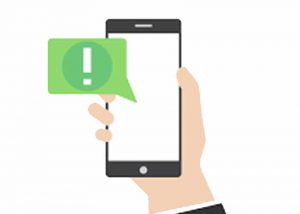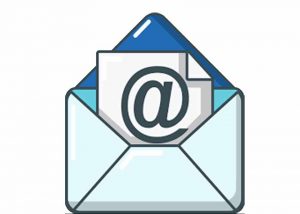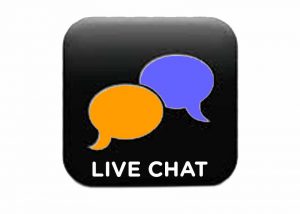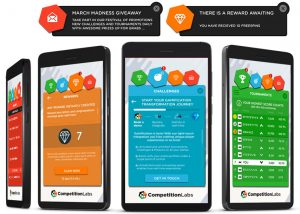Today’s customer communication methods
Communicating and engaging with customers is at the heart of what we all do, and this week I’d like to push beyond the immediate website centric interactions.
Let’s break it down into a series of criteria that differentiates the when and how:
Trigger: What is it that initiates the communication/interaction?
Timeframe: How long between a communication being initiated and it being received? Does it affect customers’ action or perception?
Truth: Has the truth of the communication changed between it being initiated and the customer receiving it? Another way of turning
Technology: Is the communication fully leveraging the technology? Is the message consistent with the means it’s being consumed?
Text: In the broader sense of “textual” – what is the size of the message and likelihood the customer will consume it?

Website
Trigger: A customer visiting a website is an obvious trigger moment, but customer expectations have moved on since the 1990’s – they expect information to be updated as they view a page.
Timeframe: There is no gap in communication between a customer requesting a page and it needing to be presented.
Truth: If a customer is on your web site they are expecting what they see to be “true” – e.g. if they see a promotion as being available, their expectation would be that if they clicked it they would be available. Similarly, if they see their position on a leaderboard, their expectation is that its “correct” (or close enough)
Technology: Website technologies are changing – they are presenting much richer communication
Text: Websites can (and do) deliver anything from a punchy message in a banner to detailed descriptions and promotions. It’s often difficult to match the message with the media

Push notifications
Trigger: A change has occurred – a prize won or a tournament enrolment has opened – the trigger is away from the customer, but usually based around criteria they have preselected.
Timeframe: The time between a communication has been triggered, and the customer reading can be anything from seconds through to hours or days, depending on when the customer prioritises reading it
Truth: Customers have a looser expectation of “truth” since they know that they aren’t necessarily reading “current” information. There is an expectation that the notification was true, at some stage, but not necessarily now.
Technology: Push notifications, even if though they are ubiquitous, are actually evolving. For example, there are ways of “updating” notifications even after they have been sent. The ability to add extra rules and logic without fundamentally rewriting everything is therefore essential in any technological implementation.
Text: By its nature, push notifications tend to be limited to a message and a single call to action. By accepting the limits

Emails
Trigger: Emails are consistently triggered by the operator
Timeframe: The time between a communication has been triggered, and the customer reading can be anything from seconds through to hours or days, depending on when the customer prioritises reading it
Truth: Customers have a relatively low expectation of the “truth” of emails – they can sometimes read them days or weeks after they’ve been sent depending on the account they’ve been sent to. Often marketing emails end up in spam, a reflection of the customers (or Google’s) View of their “truth.”
Technology: Email technology is well established, but has well-known limits.
Text: While an email can contain a long spiel and multiple calls to action, the increase in the textual content can dilute the message and decrease the effectiveness. If you know that you have several messages to deliver in an email, how do you prioritise.

Chat
Trigger: Operator sites increasingly have “live chat” which allows a customer to interact with either a robot or a human – shifting between the two depending on the need. Customers are increasingly enjoying the immediateness of WhatsApp and other chat-based interactions. They are predominantly customer-initiated
Timeframe: Customers expect the interaction to be in “real-time” – that is when they type a question they get an answer in an almost immediate timeframe
Truth: Customers have a high expectation of the truth since they are talking “with the company” directly. Anything presented is expected to be actionable.
Technology: Bots are surprisingly well developed with natural language capabilities – operators are still learning how to leverage this beyond standard helpdesk interactions with surveys. Given it is a customer-initiated interaction, there is an opportunity to further exploit the opportunity.
Text: The nature of a chat is “conversational” shifting the register from formal to informal.

Widgets
Trigger: Widgets can be anywhere from web pages to lock screens on mobile phones. The trigger for viewing a widget is when it is viewed – either in the context of a page with other information or with a list of other widgets
Timeframe: There’s no delay between a widget needing to be rendered and the user seeing it
Truth: Customers have a high expectation of the truth since its in the context of other things that are true – be it their balance or the weather
Technology: The context of a widget constrains the communication – by screen size, by technical limitations, by security restrictions on linking to Call To Actions
Text: The text of the communication is often limited to just statistical or bite-size information
Conclusion
While it’s tempting to have communications as a single checkbox on any product evaluation, we can see that messaging changes fundamentally when the method changes. The variations in immediacy, expectations and register give us different opportunities to engage with a customer.
At CompetitionLabs we interpret the challenge as needing to support a core set of rules for the logic of gamification while providing a toolset of capabilities that allow you to adapt and integrate according to the communications mechanism you choose to use.
We provide:
- A universal widget that will enable you to drop into your web site or game
- A comprehensive API that allows you to retrieve real-time information for use in bots
- An event stream that lets you trap and trigger push notifications
- A callback mechanism which enables you to trigger email notifications from your CRM
- Any combination of the above to allow you to integrate your own custom mix of communication mechanisms together